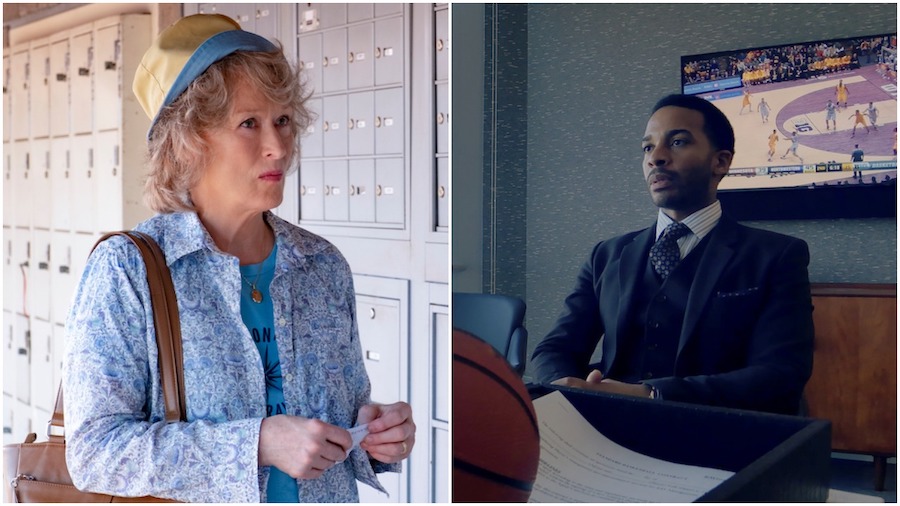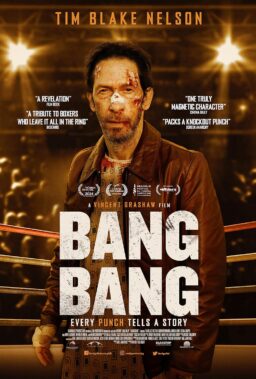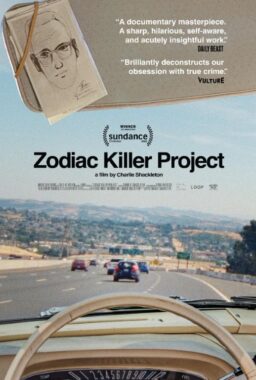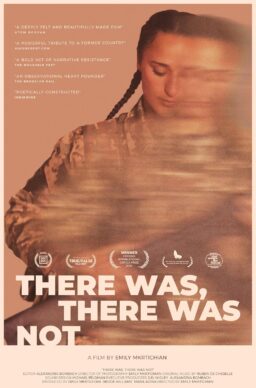Steven Soderbergh returned to directing feature films in 2017, after a four-year retirement that plenty of A-list directors would treat as a normal between-project break. But for Soderbergh diehards, he may not have felt completely back until the recent limited release of “The Laundromat” (ahead of its Netflix debut on October 18th). “The Laundromat” is Soderbergh’s worst-reviewed post-comeback movie, which itself adds a bit of cred to the filmmaker with “Full Frontal” and “The Good German” on his filmography. But more importantly, it’s his second film of 2019, after “High Flying Bird,” which debuted on Netflix in February.
The Soderbergh single-year double feature has been a fixture of the director’s work for nearly 20 years. Back in the year 2000, he cemented his late-’90s comeback with an astonishing twofer when “Erin Brockovich” and “Traffic” both became mainstream hits and Oscar darlings, including two Best Director nominations for Soderbergh (he won for “Traffic,” and that same night his movies collectively scored Best Actress, Best Supporting Actor, Best Adapted Screenplay, and Best Editing). This would be the last time one of his pairs would show such collective strength and popular appeal. Just two years later, Soderbergh was actively alienating his audience with the comic experiment “Full Frontal” and the pensive sci-fi remake “Solaris.” No one won any Oscars. Assuming “High Flying Bird” and “Laundromat” come up empty on the awards front, the same will be true of his four subsequent double features.

It’s possible that Soderbergh’s double years are sometimes a simple function of his prolificacy. But given his exacting, experimental nature, his tendency to double up feels like another way that he toys with form: he makes movies that feel like companion pieces, answers to each other, or mutated variations on the same theme in such close proximity that even non-diehards might take notice of their pairing.
This year, “High Flying Bird” and “The Laundromat” combine for his most explicit statement yet about contemporary life under capitalism, covering high-level NBA labor negotiations and the exposure of shady offshore banking practices, respectively. Coming after the genre exercises “Unsane” and “Logan Lucky,” which have plenty of social value to say but say so less directly, they might play more didactic and wonky than Soderbergh’s other recent work. But considered in the context of his other double features, his 2019 movies start to look like something he’s been building to for the better part of a decade.
The only other major American filmmaker who has as many same-year double features as Soderbergh is Steven Spielberg, who often (though not always) pairs up a big summer blockbuster with a dramatically ambitious awards play: “Jurassic Park” and “Schindler's List” in 1993; “War of the Worlds” and “Munich” in 2005. One of the earliest Soderbergh double features vaguely resemble a parody of this tactic: The starry summer release “Full Frontal” is self-referential “fun,” sort of a dry run for “Ocean’s 12” (which even in its more charming form, plenty of viewers found impenetrably self-regarding), while “Solaris” is a serious, big-budget Thanksgiving release that doesn’t have the emotional release and broad awards appeal now associated with recent astronaut-centric films like “Gravity” or “First Man.”
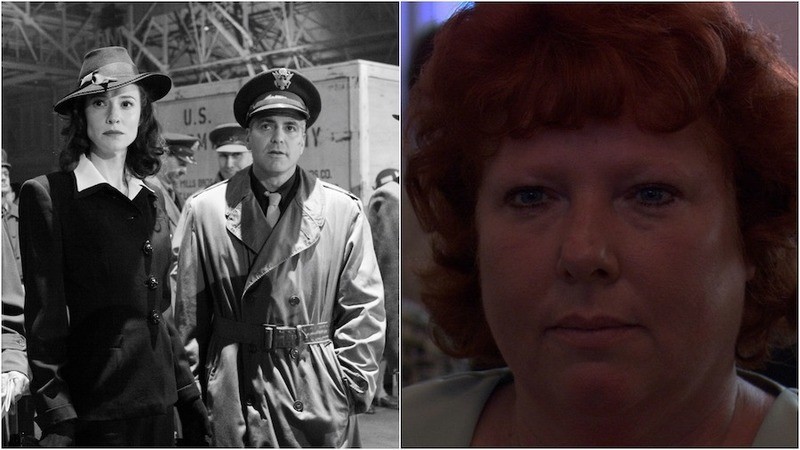
Soderbergh’s 2006 projects go further in both directions: If “Full Frontal” was too experimental even with Julia Roberts making an appearance, how about “Bubble,” which loses the stars and the humor in favor of a grim slice-of-life drama with nonprofessional actors? Its pairing with “The Good German,” an homage to 1940s studio pictures starring the extremely professional likes of George Clooney and Cate Blanchett, is incongruous on the surface, yet they both represent distortions of movie-world self-images.
“The Good German” looks and acts a lot like a movie made in its post-World War II time period (Academy aspect ratio, black and white, lots of soundstage work), but includes sex and profanity that wouldn’t be allowed in Hollywood movies until decades later. “Bubble” plays on the notion that digital technology will allow more widespread access to filmmaking tools, with its non-pro cast improvising from an outline, and its release that resembles today’s streaming market (it was available on a satellite channel concurrently with a small theatrical release). It obviously wasn’t Soderbergh’s plan that neither movie would be widely seen, but the fact that they had similarly small releases and nearly identical opening weekend grosses lends them an extra-textual poetic kinship.

Economics wouldn’t be so trivial to Soderbergh’s double features for long. The 2009 pairing of “The Girlfriend Experience” and “The Informant!” nudge Soderbergh in the direction of his 2019 films. They’re both business movies, after a fashion, though neither is content to offer either the traditional thrills or the usual underdog heroes and fat-cat villains. “The Girlfriend Experience” casts real-life adult film star Sasha Grey as a high-priced escort, making her way through a series of transactional relationships during the fallout from the 2008 Wall Street crash, while “The Informant!” is a corporate whistleblower story where the whistleblower turns out to be a liar and an embezzler (even though the price-fixing he exposes is real).

“The Girlfriend Experience” also centers on the commodification of its star’s body, a thread picked up by 2012’s “Haywire” (starring Gina Carano, a real life MMA fighter, as a black ops badass) and “Magic Mike” (starring Channing Tatum, a former dancer, as a genial male stripper). These are men and women who put their bodies on the line in order to get ahead, and must eventually consider how they might maneuver their way out of their chosen fields. In a witty and resonant touch, their respective modes of both movement and money-making—fighting and dance—are building blocks of cinema, and both movies were given wide releases to match their genre trappings.
“Haywire” is about marketing yourself into a ruthless gig economy underneath the surface of a damn good action thriller. “Magic Mike'”s economic anxiety is eased, to some degree, by its musical sequences and a romantic subplot; they may not solve the hero’s problems, but they complicate the narrative with their attendant pleasures.

“High Flying Bird” and “The Laundromat,” meanwhile, are both nominally procedural capers (theoretically similar to something like “The Informant!” or an “Ocean’s 11” adventure) and they’re made with Soderbergh’s trademark plugged-in energy. But their subtext is diminished; these are two of the textiest movies he’s ever made.
This isn’t a complaint so much as a statement of fact; Soderbergh in 2019, for whatever reason, seems more interested than ever in showing his work. “High Flying Bird” essentially ends with an entreaty to read The Revolt of the Black Athlete, a real book whose ruminations on a revolutionized, player-controlled sports industry inform the movie’s story and entire reason for being. “The Laundromat” is even more upfront about its status as a summary, using vignettes as an obvious pretext for explaining the Panama Papers scandal, “The Big Short“-style, even disclosing when the filmmakers themselves have used offshore accounts for financial reasons.
“High Flying Bird” and “The Laundromat” share more than thematic common ground. They both have a theatrical, sometimes stagy quality, albeit expressed in different ways: the rat-a-tat negotiation dialogue of “High Flying Bird” from screenwriter and playwright Tarell Alvin McCraney versus the fourth-wall-breaking, nakedly explanatory detours of “The Laundromat” (to say nothing of the movie’s final sequence, featuring star Meryl Streep self-consciously stripping away artifice for an ending that echoes “Full Frontal”‘s in form if not function). Soderbergh doesn’t drop his playfulness entirely—the formal tricks are part of the fun, even when they’re serious—but these are clearly calls to action in ways that his earlier double features are not.

“High Flying Bird” has much to recommend it, even if it’s talkier and less jazzy than Soderbergh’s top tier work. “The Laundromat” is a trickier matter. Looking at it as a stand-alone endeavor—as a successor to “The Big Short,” as a Meryl Streep vehicle, as a real-life “Ocean’”‘s movie, as a heavy-hitting awards contender compared to the scrappier minor leagues of “High Flying Bird”—it’s easy to understand its lukewarm reviews. I’m sympathetic to the criticism that, as funny as his films can be, Soderbergh lacks the broadly satirical instincts that Adam McKay brought to “The Big Short,” as well as to any charges that “The Laundromat” is mostly didactic play-acting with very little meat on its bones.
But it’s impossible for me to separate the new film from the only-slightly-less-new one that preceded it, and “The Laundromat” improves substantially as part of its double feature, as almost all of Soderbergh’s double-year output does. If “Magic Mike,” “Haywire,” “The Girlfriend Experience” and “The Informant!” all dig into the specific experiences and psychologies of their lead characters as they react to economic stressors (sometimes of their own making), “Bird” and “Laundromat” are more about the systems that produce those stressors, and less focused on memorable personalities and physicalities. “The Laundromat” is sometimes more successful as a storytelling experiment than as agitprop, but it’s also fascinating for pushing further against the limits of what storytelling can actually accomplish, as if Soderbergh is wondering aloud whether his previous movie could have made any real difference.
Pairing the films may fit well into the streaming distribution model, which Soderbergh seems to have settled into without any consternation about the old ways; he’s made two movies for Netflix, and his next project will debut on the not-yet-launched streaming service HBO Max. He’s openly agnostic about whether the theatrical experience matters much these days, so maybe the Soderbergh Double Feature is about to give way to the Soderbergh Quarterly Content Drop. In some ways, that would only be a superficial switch away from language shared with movie-house programming. But it would be a shame to lose those elegant two-film conversation pieces, the double features Soderbergh programs and sends out into the system, in search of a home inside his viewers’ heads.
